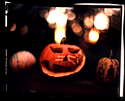heinzkeinz
Member
I'm sure this topic has been covered before, so ignore me if necessary. A quick search of this forum didn't hit on exactly what I was looking for.
I've been using 35mm for a while and I am really keen to start on LF. I have fantasies about 11x14 negatives that won't go away. I'm looking for some advice, given my situation, on how to start.
First, I am not broke but I do not have massive amounts of money to spend. I assume that my entry to LF will be with tiny-sized 4x5 film, which is readily available to me and (relatively) cheap.
Can you suggest a reasonable entry-level system for 4x5 film?
Second, I use a public darkroom and it's well-equipped in some senses but not others. Will I have difficulties tray processing the 4x5 negatives? Most of the enlargers have 4x5 negative carriers.
I've recently acquired AA's "The Negative" but it's not delivered yet. Any other recommendations on books that might be appropriate for an experienced 35mm photographer looking to make the jump into the big pool?
Last, I assume that whatever camera I end up with will have no light metering--is that correct? Any suggestions on an entry-level light meter?
I appreciate any and all help!
I've been using 35mm for a while and I am really keen to start on LF. I have fantasies about 11x14 negatives that won't go away. I'm looking for some advice, given my situation, on how to start.
First, I am not broke but I do not have massive amounts of money to spend. I assume that my entry to LF will be with tiny-sized 4x5 film, which is readily available to me and (relatively) cheap.
Can you suggest a reasonable entry-level system for 4x5 film?
Second, I use a public darkroom and it's well-equipped in some senses but not others. Will I have difficulties tray processing the 4x5 negatives? Most of the enlargers have 4x5 negative carriers.
I've recently acquired AA's "The Negative" but it's not delivered yet. Any other recommendations on books that might be appropriate for an experienced 35mm photographer looking to make the jump into the big pool?
Last, I assume that whatever camera I end up with will have no light metering--is that correct? Any suggestions on an entry-level light meter?
I appreciate any and all help!







